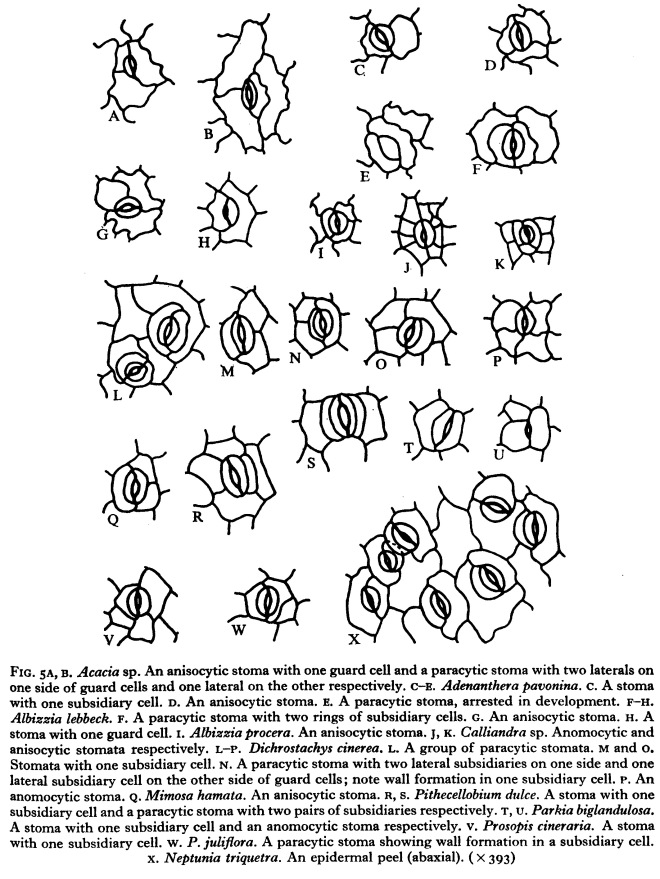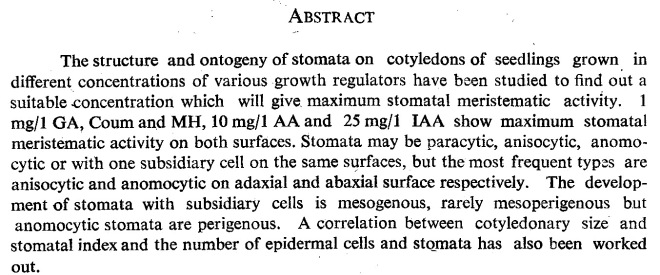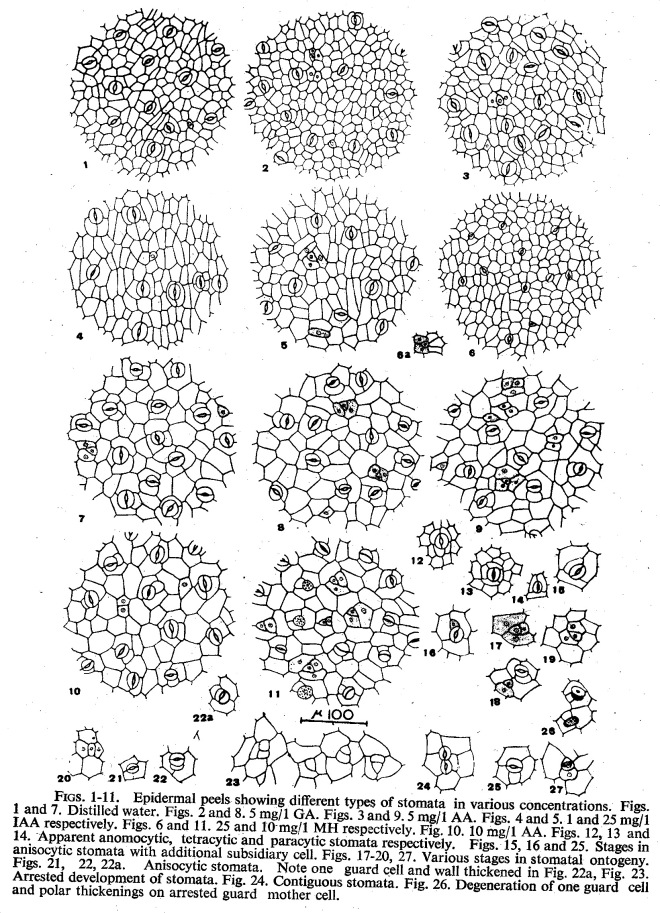 Photo credit: Google
Photo credit: Google
Mimosa pudica
Epidermal structure and stomatal ontogeny in some Mimosaceae .
by Shah G. L., Parabia M. H., Kothari M. J. (1972)
in Ann.Bot.,36:832-835. –
http://aob.oxfordjournals.org/content/36/4/823
Abstract
The structure of trichomes and stomata on leaflets of 21 species of the Mimosaceae are described.
Non-glandular trichomes in Mimosa pudica are of three types: unicellular, with a rounded thick-walled base and a terminal unicellular body, and multicellular. Capitate, clavate, or cylindric, 3–6-celled glandular hairs are observed on leaflets of Mimosa pudica only.
Leaflets are amphistomatic in all species except Adenanthera pavonina, Calliandra sp., Parkia biglandulosa, Pithecellobium dulce, and Samanea saman in which they are hypostomatic.
Only paracytic stomata are found in Leucaena leucocephala and Mimosa pudica. In the rest stomata are of more than one type. In spite of the diversity, the most frequent type in these species is paracytic. Anisocytic stomata, in all cases, are secondarily derived from paracytic ones by transverse or oblique wall formation in a subsidiary cell.
Similarly some stomata with one subsidiary cell are also secondary derivatives of the paracytic ones because of one of the subsidiary cells assuming the form of an epidermal cell.
The development has been traced in 14 species and that of paracytic stomata may be mesogenous or mesoperigenous, that of stomata with one subsidiary cell mesogenous but anomocytic stomata are ontogenetically perigenous. Occasionally a meristernoid is cut off from one of the subsidiary cells of a paracytic stoma. The organization of a stoma from such a meristemoid has been traced.

















 Photo credit:
Photo credit: 



You must be logged in to post a comment.